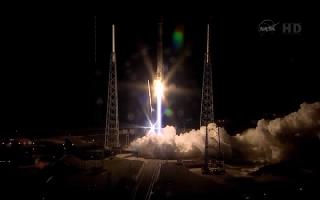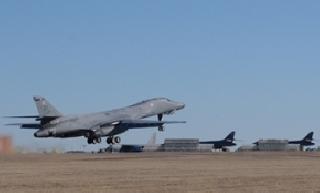
The United Launch Alliance Atlas V rocket lifts off from the Cape Canaveral Air Force Station carrying the Tracking and Data Relay Satellite, or TDRS-L, spacecraft to Earth orbit. A NASA photo
CAPE CANAVERAL, FLORIDA (AP): NASA's super-high-flying fleet of communication satellites just got bigger.
An unmanned rocket blasted into a chilly, clear sky Thursday night carrying the latest, third-generation Tracking and Data Relay Satellite.
NASA uses the TDRS satellites to support the International Space Station and Hubble Space Telescope, among other craft.
The network is 35,886 kilometres high, at various locations above the equator, and allows continuous two-way contact with the space station and its six inhabitants.
The TDRS system is so vital it's considered a national asset. A modern-day human space programme would be difficult if not impossible without the constant coverage provided by the TDRS satellites, said Badri Younes, NASA's deputy associate administrator for space communications and navigation. Ground stations, limited in number, would provide just a fraction of that capability.
Each satellite has a pair of dish antennas 15 feet (4.5 meters) in diameter.
"Not only are we getting global coverage 100 percent of the time, we are getting it in real time," Younes said, snapping his fingers, at a news conference earlier this week.
"Without such support, we'd have to live with coverage around the 10 to 15 percent," he said.
"No human spaceflight programme can be supported at this data rate. And even our ability to respond real time to emergency would diminish drastically. So that's why the TDRS has been declared as a national asset."
NASA is the primary user; the TDRS system also occasionally assists other countries' space agencies and the US military. In 2002, a TDRS satellite allowed Massachusetts doctors to oversee knee surgery performed at the South Pole.
This newest $350 million satellite, which will work its way up from a temporarily low orbit, is designated "L" in the TDRS series. NASA will rename it TDRS-12 once it's checked out in orbit, by late spring.
NASA launched its first TDRS in 1983 aboard a space shuttle. The previous satellite, TDRS-11, soared in January 2013.
Officials said they need six active TDRS satellites in orbit at any one time, along with a ready-to-go spare.
 Previous Article
Previous Article Next Article
Next Article













The Indian Air Force, in its flight trials evaluation report submitted before the Defence Ministry l..
view articleAn insight into the Medium Multi-Role Combat Aircraft competition...
view articleSky enthusiasts can now spot the International Space Station (ISS) commanded by Indian-American astr..
view article